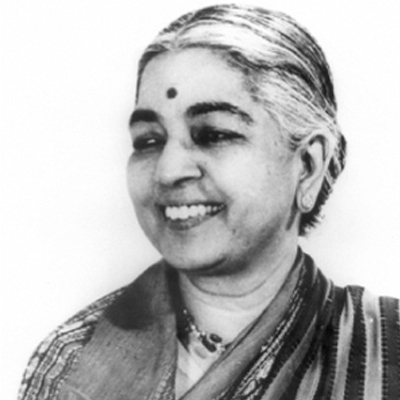
Born on 29 Febuary1904 at Madurai, Rukmini Devi Arundale was to become an icon in the field of art. Born to NeelakantaShastri and Seshammal, Rukmini Devi came to be celebrated as a theosophist, dancer, educationist, and animal rights activist in her lifetime. Her early association with the Theosophical Society, Chennai, where she lived after her father’s retirement proved to be a large influential factor in her life. She married Dr. George Sydney Arundale, a British theosophist who was many years her senior and after the initial waves it caused, they settled down at the Theosophical Society.
Her marriage took her to many countries with Dr. Arundale, an active theosophist. In 1923, she became the President of the All India Federation of Young Theosophists, and the President of the World Federation of Young Theosophists in 1925.
In 1928, the couple attended a performance of Anna Pavlova, the eminent Russian ballerina who inspired Rukmini Devi’s foray into the dance world. A later meeting with her while on a ship to Australia fuelled Rukmini Devi’s interest in the dance forms in India. Meanwhile, she learnt ballet from Anna Pavlova’s student Cleo Nordi.
Rukmini first saw Sadir at the Annual Conference of Madras Music Academy in 1933. Determined to learn this beautiful art form, with the help of lawyer and social activist, E KrishnaIyer, she requested Pandanallur Meenakshisundaram Pillai to teach her. At a time when only devadasis learnt sadir, this was a path-breaking quest. Rukmini Devi gave her first public performance at the 'Diamond Jubilee Convention of the Theosophical Society in 1935.
From this point, there was no turning back. Encouraged by the Theosophical society, Rukmini Devi founded the International Academy of Arts which she later named Kalakshetra.
With Kalakshetra grew a whole new sense of aesthetics, lighting, costumes, and a revised dance technique culled from the Pandanallur bani.
Rukmini Devi’s pioneering creations—the dance dramas—continue to appeal to audiences. She collaborated with Sanskrit scholars, musicians and Kathakali artistes to create 26 dance dramas choreographed over three decades. The most celebrated of these is the six part Ramayana which starts with Sita Swayamvaram and ends with Maha Pattabhisekham. Her other dance dramas include Andal, Kannappar Kuruvanji, Kuttrala Kuruvanji, Meenakshi Vijayam, Kurma Avataram and Sakuntalam.
Both Rukmini Devi and George Arundale were interested in education. Schools based on the Montessori method were first started in India, when Dr. George Arundale invited Dr. Maria Montessori to start courses at the Besant Theosophical High School in 1939. The Besant Arundale Senior Secondary School, The College of Fine Arts, The Besant Theosophical High School , The Maria Montessori School for Children, the Craft Education and Research Centre and the U.V.SwaminathaIyer Library, have all sprung from that early effort.
Rukmini Devi was nominated as a member of the the Rajya Sabha, the upper house of the Indian parliament in April 1952 and re-nominated in 1956. Keenly interested in animal welfare, she was associated with various humanitarian organisations, and as a member of the Rajya Sabha, was instrumental in the legislation for The Prevention of Cruelty to Animals Act 1960. She was the first chairperson of the Animal Welfare Board of India, under her chairmanship in 1962. A great champion of vegetarianism in the country, she was Vice President of the International Vegetarian Union for 31 years from 1955..
In 1977, Prime Minister Morarji Desai offered to nominate her for the post of President of India, which she turned down.
Rukmini Devi Arundale died on 24 February 1986 in Chennai.


